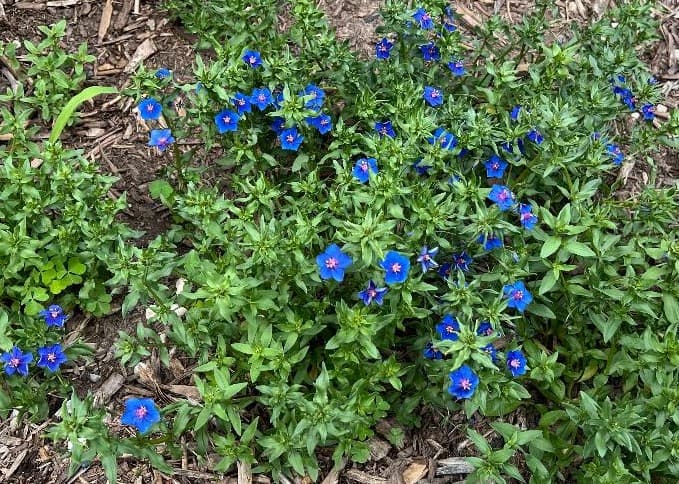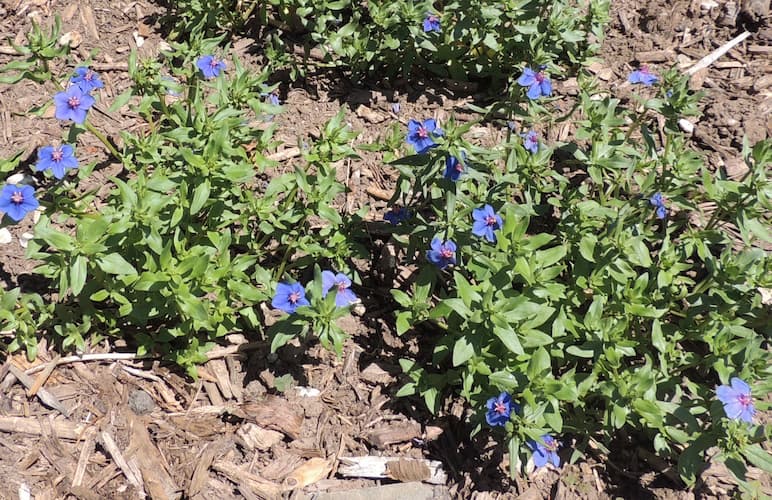How to Grow Poor Man's Weather Glass Flowers

About Growing Poor Man's Weather Glass Plants in Your Home Garden
Poor Man’s Weather Glass plants are easy-to-grow annual flower. As a member of the Primrose family, these plants are native to Europe, and Western and Northern Africa. In Europe, this flower is commonly considered a weed. But, if you are growing Poor Man’s Weather Glass flowers, you recognize it for what it is… a beautiful and attractive flower. The 1/4″ true blue blooms are bright and cheery.
This plant displays an interesting characteristic. It predicts the weather! So, don’t go off to work or the store without checking on to see if the flowers are open or closed. The blooms open on sunny days. They close in cloudy weather if rain is approaching.
Poor Man’s Weather Glass plants grow well in rock gardens, as borders, in cottage gardens, and in containers on your patio or deck. It makes for a good annual ground cover. As an added bonus, these cheerful blue blooms attract butterflies and hummingbirds, too.
Flowers Bloom: Spring through Fall
Flower Colors: Flower colors include blue, pink, red-orange, scarlet, and scarlet red.
Other Names: Blue Pimpernel, Scarlet Pimpernel, Red Chickweed, Poor Man’s Barometer, Shepherd’s Weather Glass.
Plant height: 6-7″
Did You Know? Poor Man’s Weather Glass is actually classified as an herb.
Annual, Anagallis Monellii

Plant Propagation
Poor Man’s Weather Glass plants are grown from seeds. They are good re-seeders.
The seeds can be directly sown into your flower garden or seeded indoors for transplanting later. However, they can take a very long time to sprout. So, make sure to clearly mark the planting site.
For indoor starts, sow seeds 4 -6 weeks before the last frost in your area. Or, sow seeds outdoors after all danger of frost has passed. Cover seeds lightly with 1/4″ soil. Water thoroughly once. Then, keep the soil moist, not wet. The seeds germinate slowly.
Note: We recommend a heated germination mat, to increase the speed of germination, and for a higher germination rate.
Transplant young plants into your garden after the last frost date for your area.
Final Plant Spacing: Space them 18 – 24″ apart. They will tolerate a little crowding.
Garden Tip: These plants are not easy to transplant. If started indoors, plant in peat pots. Transplant outdoors when the plants are still young. Plant outdoors, taking care not to disturb the roots.
Poor Man’s Weather Glass are good self-seeders. Select a planting site where you want them to come back year after year.
Days to Germination: 14 to 45 days!

How to Grow Poor Man's Weather Glass Flower Plants
This easy-to-grow plant grows best in full to partial sun.
It grows well in sandy, well-draining soils. Also, they will grow okay in average soils, as they are not heavy feeders. As a result, these plants do not need a lot of fertilizer. Apply a general-purpose fertilizer every 6-8 weeks.
Water regularly, but do not over-water. Allow the soi to dry out a little between watering.
Pinch back growing tips in spring and early summer, to encourage the plants to spread.
Ideal Soil pH: 6.5 – 7.5.
Also, see:
Plant Problems – Identify the causes and find the cures.
Insects and Plant Disease
This plant seldom has problems with insects and disease. If insect or disease problems occur, treat early with organic or chemical insect repellents and fungicide.
Related Articles
Please support our site. Shop for:
- rmmatthews100@hotmail.com
- 585-721-6528
- Rochester, NY
©1999-2024 GardenersNet.Com, All Rights Reserved

